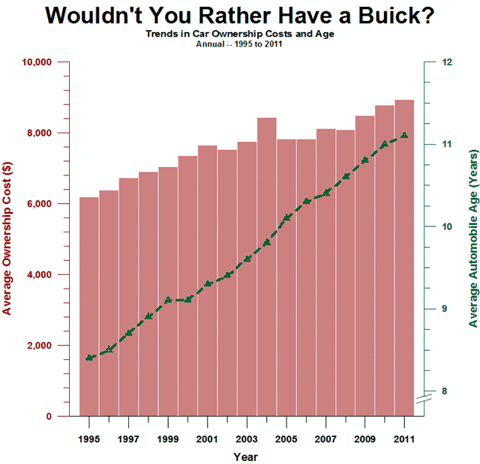By Eric Schaefer
The talk of an American manufacturing revival seems to have died down. Maybe all this chatter is a bit pre-mature -- or even, dare we say, overly optimistic. Now, like any patriotic citizen, we would take great pride and delight in a real production renaissance. In our opinion, "Made in America" is a label appearing today on too few goods. But we are realists: We acknowledge there are more than just a few speed bumps along the road to re-starting America's forges and factories.
The automotive industry offers an interesting case study of these challenges -- many overlooked amid all of the euphoric reports. In the aggregate, automobile and auto parts manufacturers employ over 800,000 Americans. Manufacturing enterprises employ approximately 12 million workers. The automotive industry today directly accounts for about one in every 15 manufacturing jobs. These numbers understate its importance. Indirect manufacturing employment -- among steel and plastic producers, machine tool manufacturers and the like -- add to the job totals, since for many firms in these industries the automotive sector is the largest or second largest client. These numbers do not include refining activities (most oil is cracked to produce gasoline) or the extensive service sector -- from dealerships, to auto parts shops, to filling stations -- existing solely for our four-wheeled companions.
Putting aside Washington's ambivalence (antipathy in certain quarters) to the internal combustion engine, the problem confronting the industry is one of demand. Frankly, unless the U.S. suddenly becomes a net auto exporter or domestic producers win back market share, we do not see demand reviving to levels necessary to return domestic production above 15 million autos and light trucks per annum. This target is one-third higher than last year's 11.3 million sales volume of domestic cars and light trucks.
There are three reasons for our pessimism. The first is the cost of car ownership. The American Automobile Association (AAA) estimates in 2011 it cost $8,946 per annum to own and operate the average sedan. Fifteen years ago the cost was $6,389 -- or roughly 30% less. Rising gasoline and insurance premiums are partly to blame; rising sticker prices are also culpable. As a consequence, car ownership costs present almost 18% of the median household income. While this is not the highest it has been, it is up from 16% in 2008. A steady rise in auto related expenses, coupled with stagnant household incomes since the Great Recession, have pinched consumer's wallets.
A second factor is demographics. A recent J.D. Power and Associates survey reveals that the 18- to 34-year age cohort accounted for only 13% of new vehicle registrations in 2012; 10 years ago the proportion was 24%. Unemployment in this age group is almost 11% (vs. 7.4% for the population 16 and older). In addition, the median household income for the two youngest cohorts (15 to 24 and 25 to 34) runs lower than for older age groups. The difference is particularly great in the 15 to 24 age group -- the years during which an individual frequently acquires his or her first set of wheels.
A final factor is the overall improvement in automobile quality. A generation ago it was the rare car with more than 100,000 miles on the odometer. Today, the achievement is more common. As a result, in 2011 the average passenger car's age was 11.1 years. Fifteen years ago the statistic was 8.4 years. Certainly, tough economic times have compelled consumers to make a virtue out of necessity. But quality improvements help.
Unless manufacturers significantly reduce sticker prices or dramatically improve fuel efficiency (at current prices or less), the 15 million target will remain elusive. At some stage every car becomes a jalopy, forcing its replacement. But, barring a surge in household incomes, sticker shock will be a sales deterrent for some time to come.
Notes on Sources, Methods and Definitions:
All chart data obtained from the U.S. Department of Transportation (DoT). Car ownership expenses based on an annual AAA survey of the costs associated with car ownership. These include gasoline, insurance, license and registration and financing costs among others. AAA estimates assume mileage driven is 15,000 miles in a year. The definition of a car excludes light trucks and sport utility vehicles (SUVs). The estimated annual ownership costs of a SUV is higher than the sedan average. Average car age is sourced by the DoT by R.L. Polk Co. Again, the statistics cited are for cars excluding light trucks and SUVs. The J.D. Power and Associates survey cited is from May 2012. Median household income data sourced from the U.S. Census Bureau. Automotive related employment statistics are from the Department of Labor's Bureau of Labor Statistics (BLS). Sales and production data is from the Bureau of Economic Analysis (BEA). (Sources: DoT; AAA; R.l. Polk; J.D. Power; BLS; BEA; AIFS estimates.)
